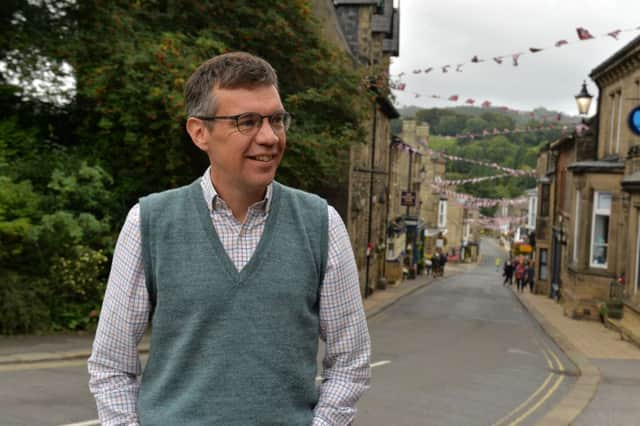Taking visitors off the beaten track


But if the county’s two National Parks are to survive and thrive in the coming decades, they may have to direct their guests further off the beaten track, it was suggested yesterday.
The writer Julian Glover, who was commissioned in May by the Environment Secretary, Michael Gove, inset, to conduct a review of ways to make England’s greenest spaces fit for the future, said areas such as the Yorkshire Dales and North York Moors could benefit from new thinking on encouraging visitors which would at the same time deliver community benefits.
Advertisement
Hide AdAdvertisement
Hide AdHis final report is still a year away, but in an interview with The Yorkshire Post, he said visitors to National Parks should be encouraged to discover less familiar areas away from the most familiar haunts.
“Maybe we need to encourage people to explore a bit more widely and get away occasionally from the honeypots – the places that are always visited, where the car park will be full,” he said.
“If you travel just a few miles further, you can often find somewhere really special and spread the load a bit. A village down the road, another bit of wonderful Yorkshire countryside that needs some support.”
It was at Easter, on the first busy weekend of this year’s tourist season, that the problem of visitors “clustering” in a single hotspot became evident.
Advertisement
Hide AdAdvertisement
Hide AdThe Dales community of Malham, said to be the most congested village in any of Britain’s 15 National Parks, was brought to a standstill by hundreds of day-trippers whose cars gridlocked the narrow roads and blocked access for buses and emergency vehicles.
The chaos led to fears among locals that lives would be at risk unless traffic management was put in place.
Mr Glover, who lives in the Peak District National Park, was asked to report on the welfare of such areas, and those defined as Areas of Outstanding Natural Beauty, as the 70th anniversary approaches of the law that brought them into being.
He said that despite well-publicised challenges of ageing populations coupled with a chronic shortage of housing in many areas, there was “optimism” that real change could be wrought.
Advertisement
Hide AdAdvertisement
Hide AdBut he also acknowledged: “In some other parts of the world, National Parks are more alive, symbols of their countries. Perhaps we can bring a bit of that enthusiasm here without losing the strengths of what we’ve already got.”
Mr Glover said there was “lots of interest” within Whitehall in developing the parks, but that visitors should be made to feel a part of them, “rather than having a National Park that’s kind of done just like any other bit of government”. He added: “People are beginning to talk about what can we do differently, how can we make this better and that’s really exciting.”